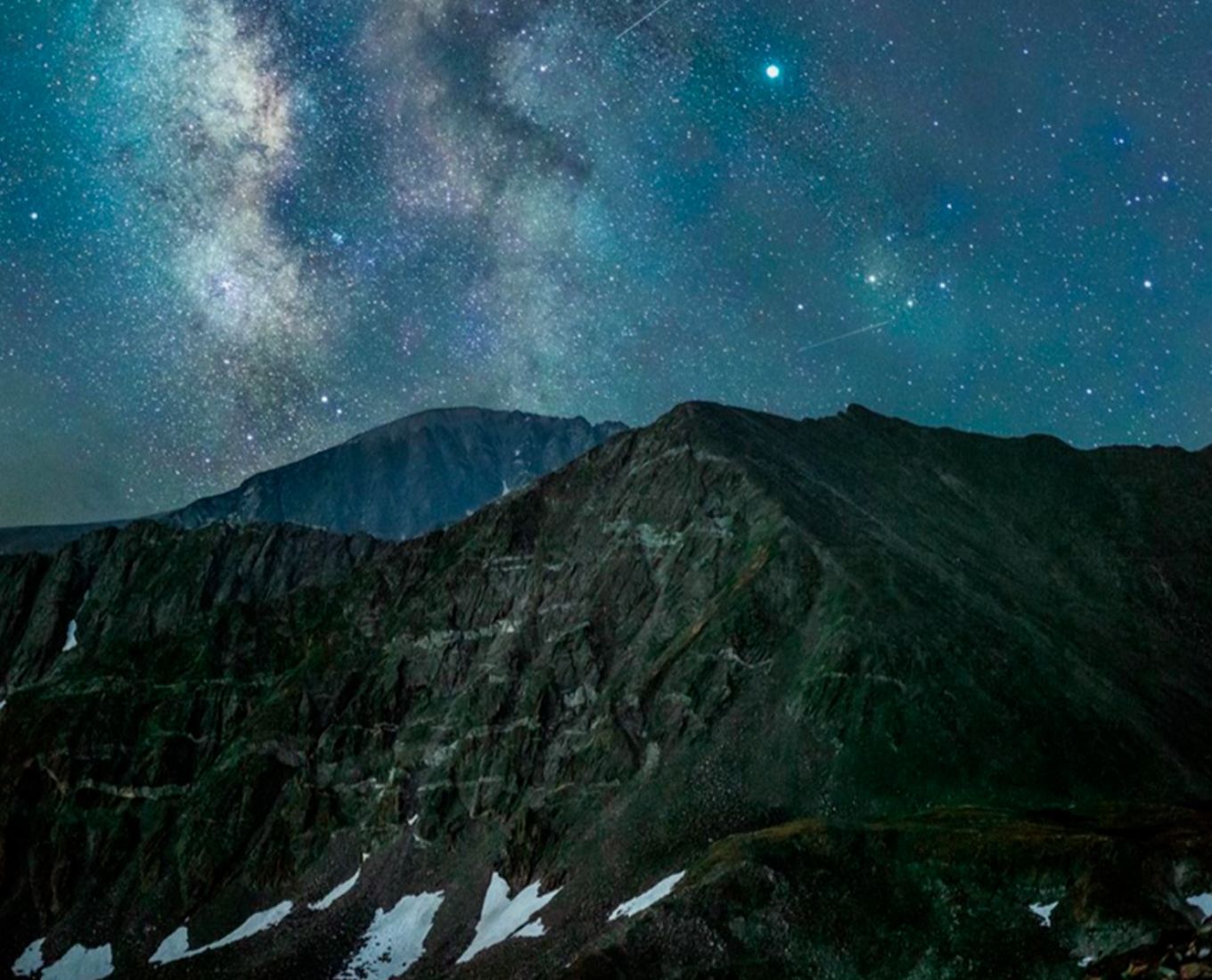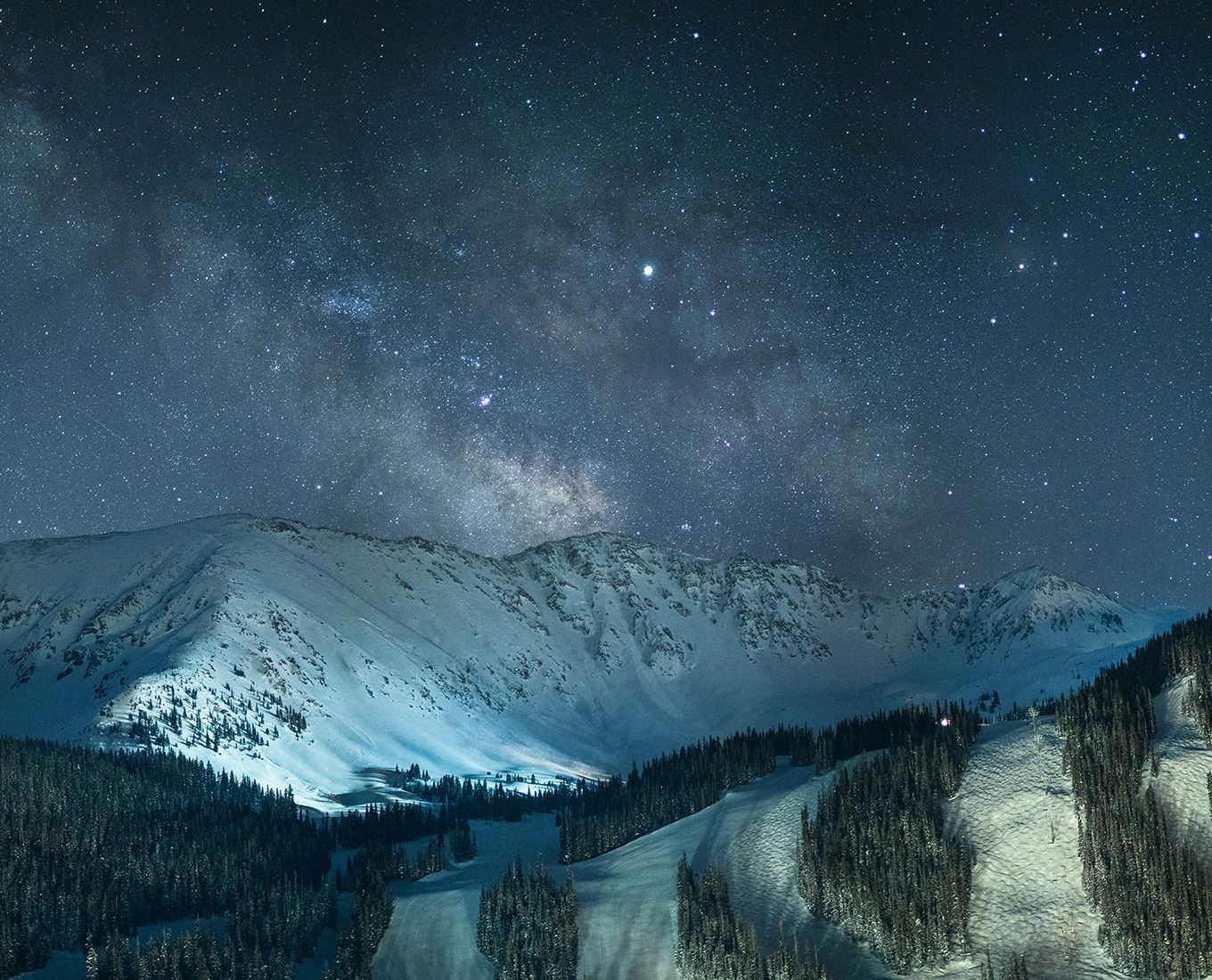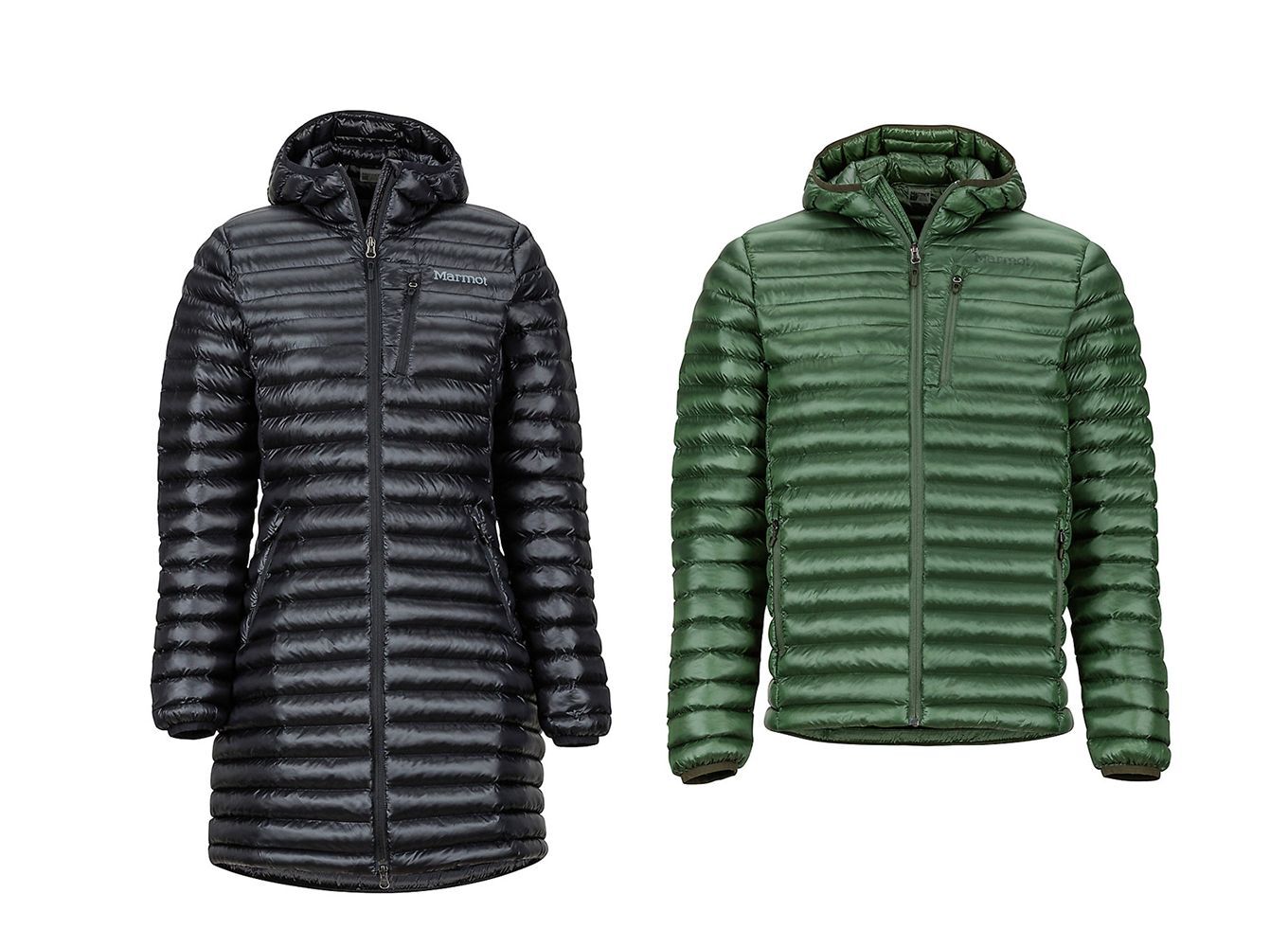Night Photography
With professional photographer Brooke Bartleson
Cold wind blows down from the mountainside. The world is completely quiet. There’s not much to see aside from the beams of your friends’ headlamps bobbing down the trail a few steps ahead of you. Stop for a second and turn your back to them. Click off your headlamp. Let your eyes adjust to the darkness. The scene that unfolds before you takes your breath away. Over the tips of the pine trees, billions of stars glisten like ice. The raw, wild beauty is otherworldly. Words fail.
Luckily, where words fail a photo will always speak. Astrophotography (the art of photographing the stars) is one of my personal favorite forms of photography. It enables you to capture moments that most people will never have the opportunity to see for themselves. It inspires you to hit the trail in total darkness and experience the wilderness while the rest of the world is asleep. And thanks to the ever-innovative camera technology of this decade, getting shots like these isn’t nearly as complicated as it may seem.
GEAR UP.
When it comes to astrophotography, your smart phone isn’t going to cut it. Smartphones are awesome for casual photography, but the stars are still uncharted territory for most phones. The good news is, if you have a DSLR or mirrorless camera and the lens that came with it, you probably already have everything you need to head out and shoot the astral planes. If you are lucky enough to have a handful of different lenses to choose from, opt for a wide, fast lens. The ideal focal length would be between 8mm-50mm and the ideal aperture would be f/4.5 and below. Don’t sweat if your lenses are outside either of those ranges though, the best lens is the one you have with you. Use whatever you’ve got. Once you’ve picked your lenses, don’t forget to grab your tripod. You’re going to be taking long exposures, so a tripod is absolutely necessary to keep the camera still while you shoot.
SET UP.
Your settings are key. You need to find the sweet spot in your camera that produces sharp images, with as little noise or grain as possible. The best place to start is to set your aperture to the widest it can get, and your shutter speed to about 20 seconds. Avoid going longer than 20 seconds if you can, as that's when the camera will pick up on the Earth’s rotation and the stars will begin to blur. Adjust your ISO as needed to dial in the exposure you want. A higher ISO means a brighter more detailed image, but also has the downside of causing more noise/grain which may make the photo look a little messy. Don’t be afraid to play around with your settings, astrophotography is more trial and error than any other form of photography. Be experimental, and don’t give up right away if you’re struggling to get the shots you want as first.
NO REALLY, GEAR UP.
Remember that cold wind I mentioned in the beginning of this blog? Yeah. Expect that. It's cold at night, usually colder than expected. And you’ll be standing pretty still while you’re shooting. I dress in layers so I can strip down while I hike to my location and bundle up once I’m in place. Nothing kills the vibe of your night shoots quite like being so cold that the screaming barfies set in and suddenly photography is the last thing on your mind as you hightail it back to your warm car or campfire.
PRO TIP: Marmot featherless jackets are wicked warm and packable. I don’t shoot stars without mine.
NEVER STOP LEARNING.
Just like any outdoor sport or artform, practice makes perfect in astrophotography. Be patient. Don’t get discouraged if your first few nights of shooting don’t produce the results you're aiming for. Trial and error is the most important part of the process, and the more errors you make the more you learn what not to do. Keep chasing the stars and improving every chance you get. In the long run, you’ll never remember the nights you got plenty of sleep. But you’ll always remember the nights you spent chasing the stars through the mountains in complete darkness while your fingers slowly freeze and your heart pounds with the excitement of experiencing the wild beauty of a night in nature.










